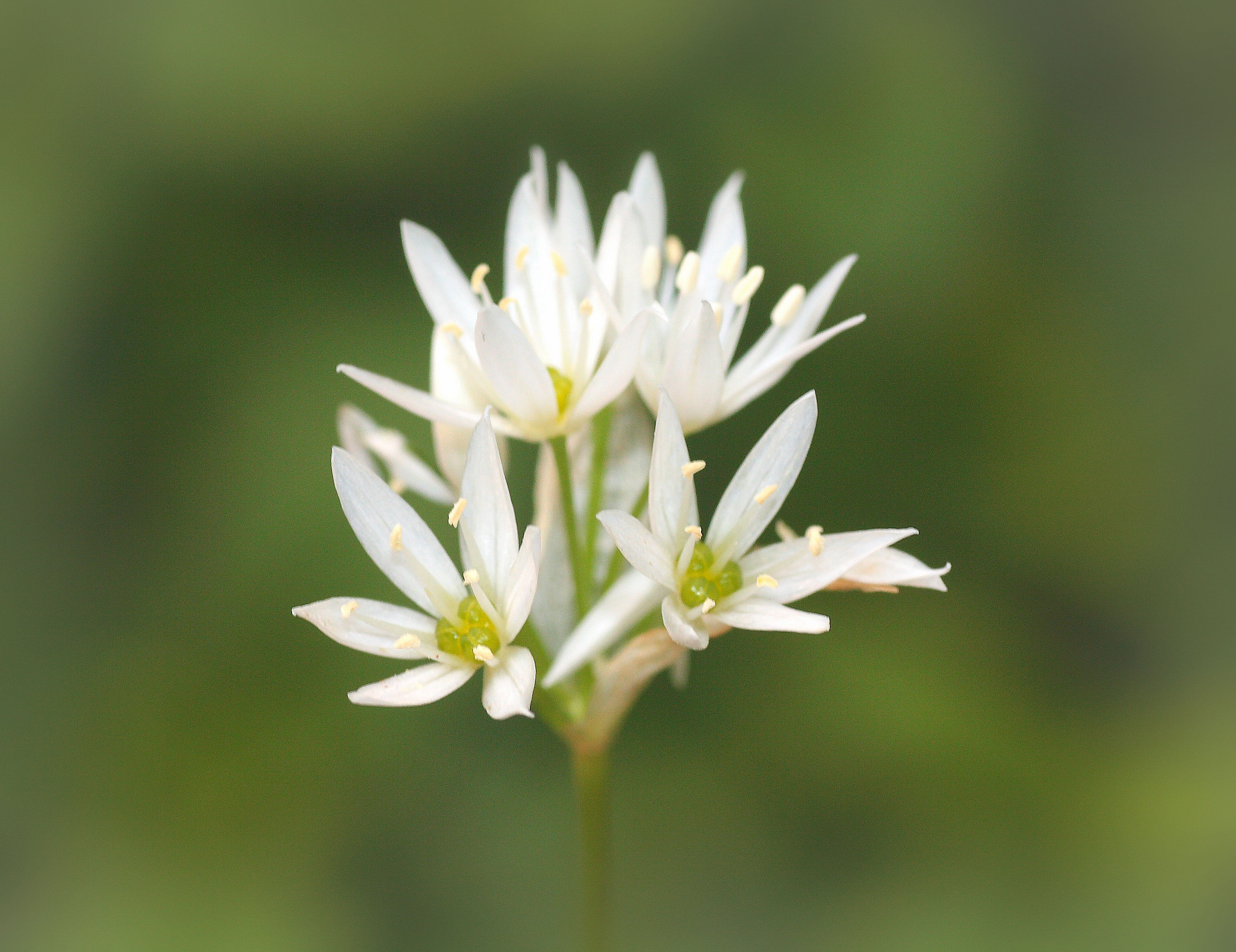
RAMSONS |
ALLIUM URSINUM |
 |
| Fig 1 |
DESCRIPTION: Height up to 35cm. A delightful spring perennial usually found in large masses. The leaves are long and lanceolate with parallel veining and grow around the base of the stem. The white starry flowers are made up of 3 petals and 3 sepals and a borne in umbels of 15 to 20 individuals. When parts of the plants are crushed (especially the leaves) a fine garlic/onion aroma is had. DISTRIBUTION: A widespread plant in lowland Britain, only absent from the far North of Scotland. HABITAT: Shaded hedgerows, woodland banks and riversides with a preference for slightly acidic soil. FLOWERING TIME: April to June. EXTRA NOTES: This plant is also called known as Wild Garlic, Wild Cowleek, Cowlic, Buckrams, Broad-Leaved Garlic, Wood Garlic, Bear Leek or Bear's Garlic. 'Ursinum' relates to bears and there is a folk tale that says, after a long hibernation, the hungry bears have a particular fondness for the bulbs of this plant. Ramsons is from the Saxon word Hramsa, there is evidence it has been used in English cuisine since Celtic Britons over 1,500 years ago. The leaves can be used in a salad or for making pesto. The cloves of wild garlic were planted for good luck in the thatch of Irish cottages; this custom was also thought to deter fairies. Medicinally the plant was believed to be diaphoretic (induces sweating), diuretic (increased urine flow), expectorant (eased breathing), stimulating and have antiseptic properties. |